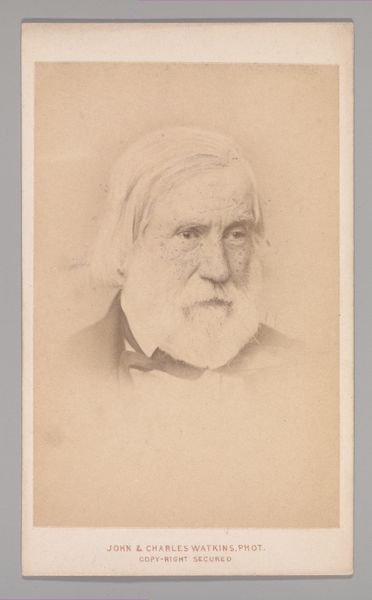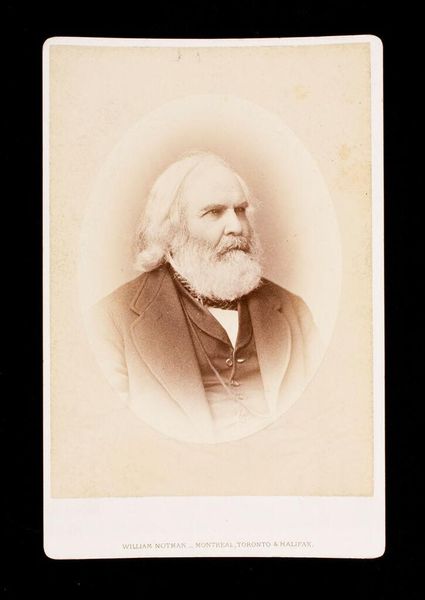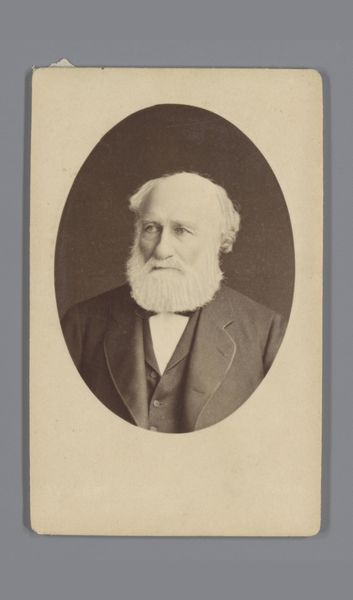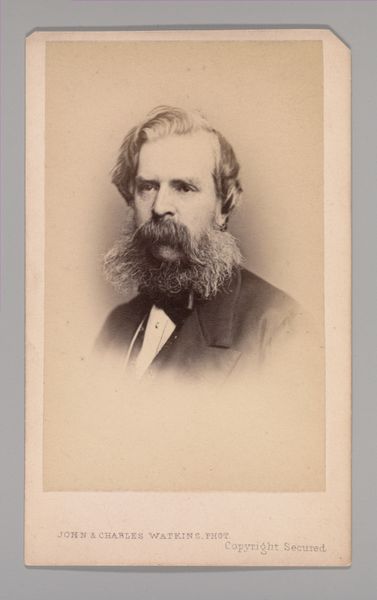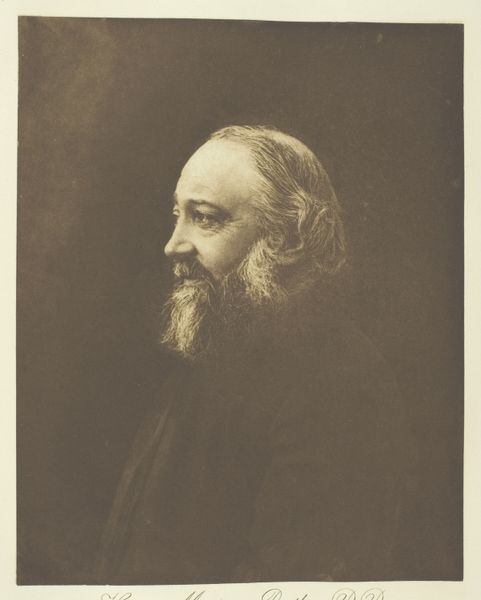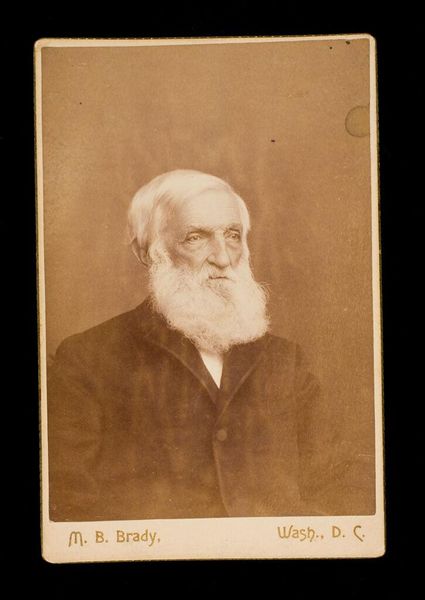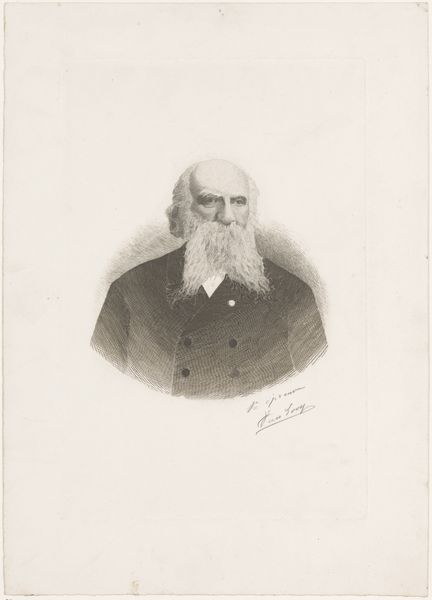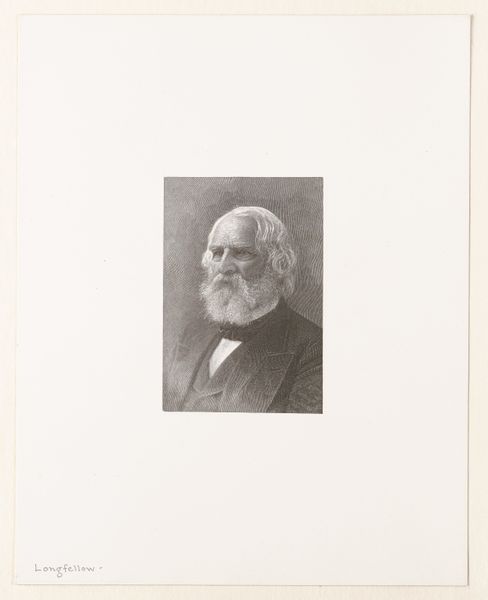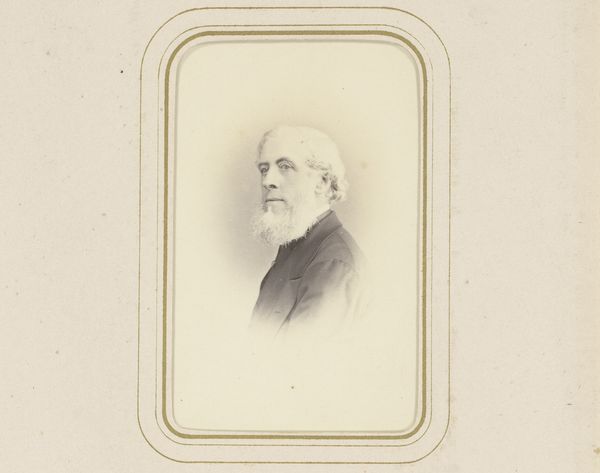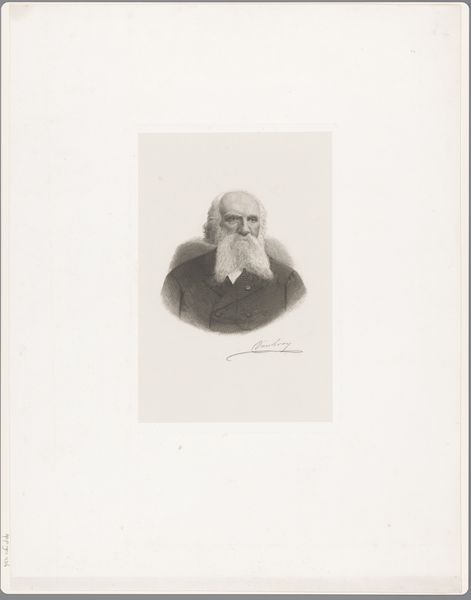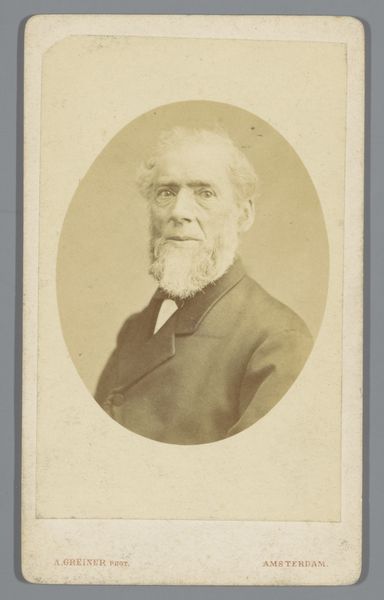
Fotoreproductie van een geschilderd portret van Henry Wadsworth Longfellow 1876
0:00
0:00
Dimensions: height 106 mm, width 67 mm
Copyright: Rijks Museum: Open Domain
Curator: This is a reproduction of a painted portrait of Henry Wadsworth Longfellow, created in 1876 by Sophus Williams. It’s an example of Pictorialism in photography. Editor: There’s an immediate warmth that radiates from the image. Even with the somewhat faded sepia tones, his gaze feels quite direct, almost paternal. There’s an air of gravitas, softened by the gentleness in his expression. Curator: Absolutely, and Pictorialism aimed to elevate photography to the level of fine art. Note how Williams mimics painterly effects through soft focus and tonal manipulation, common practices within this movement which positioned itself against purely documentary photography. This wasn’t about capturing mere likeness; it was about artistic expression. Editor: It's fascinating how photography, which emerged as a tool for objective representation, then consciously tried to imitate the more established medium of painting. What sociopolitical functions do you think Longfellow played at the time, as someone being celebrated through these artistic channels? Curator: Longfellow was, of course, a hugely popular poet. In portraying him this way, Williams is solidifying his place within the cultural elite, reinforcing prevailing notions of artistic genius and intellectual authority. These images circulated widely, influencing public perception. They contributed to the construction of celebrity and national identity at a time when both were undergoing significant shifts. The distribution was handled by commercial galleries eager to engage new audiences as a symbol of status. Editor: It makes me think about how even today, artists and intellectuals are often valorized, sometimes uncritically. The portrait, while seemingly innocent, participates in power dynamics. It presents Longfellow as this benevolent, almost saintly figure, potentially masking more complex realities of his life and work within a white upper class society. What we need to be cognizant of is his place, our place, as being a subject. We need to think about all these figures through an anti-racist, decolonized lens. Curator: Indeed, examining these historical portrayals with contemporary sensibilities encourages us to critically assess whose stories are told, and how, in the ongoing narrative of art and culture. The proliferation of his image certainly benefited his reputation. Editor: Absolutely. By acknowledging this artwork within broader contexts, we are encouraging deeper discussions about representation, identity, and the politics of art making and consumption. Curator: It offers us a glimpse into the construction of artistic reputation and the complex relationship between art, power, and societal values.
Comments
No comments
Be the first to comment and join the conversation on the ultimate creative platform.

